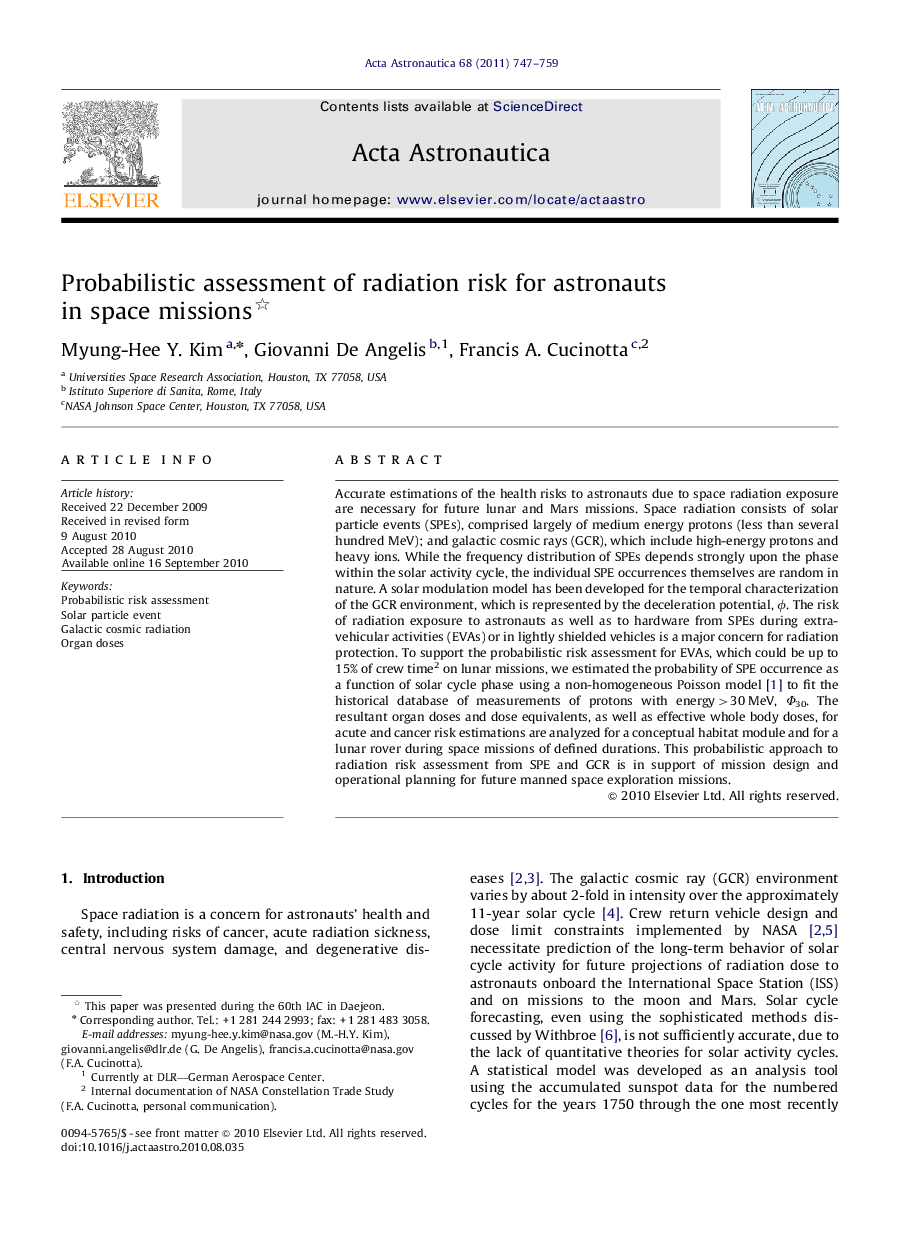| Article ID | Journal | Published Year | Pages | File Type |
|---|---|---|---|---|
| 1715898 | Acta Astronautica | 2011 | 13 Pages |
Accurate estimations of the health risks to astronauts due to space radiation exposure are necessary for future lunar and Mars missions. Space radiation consists of solar particle events (SPEs), comprised largely of medium energy protons (less than several hundred MeV); and galactic cosmic rays (GCR), which include high-energy protons and heavy ions. While the frequency distribution of SPEs depends strongly upon the phase within the solar activity cycle, the individual SPE occurrences themselves are random in nature. A solar modulation model has been developed for the temporal characterization of the GCR environment, which is represented by the deceleration potential, ϕ. The risk of radiation exposure to astronauts as well as to hardware from SPEs during extra-vehicular activities (EVAs) or in lightly shielded vehicles is a major concern for radiation protection. To support the probabilistic risk assessment for EVAs, which could be up to 15% of crew time 2 on lunar missions, we estimated the probability of SPE occurrence as a function of solar cycle phase using a non-homogeneous Poisson model [1] to fit the historical database of measurements of protons with energy>30 MeV, Φ30. The resultant organ doses and dose equivalents, as well as effective whole body doses, for acute and cancer risk estimations are analyzed for a conceptual habitat module and for a lunar rover during space missions of defined durations. This probabilistic approach to radiation risk assessment from SPE and GCR is in support of mission design and operational planning for future manned space exploration missions.
